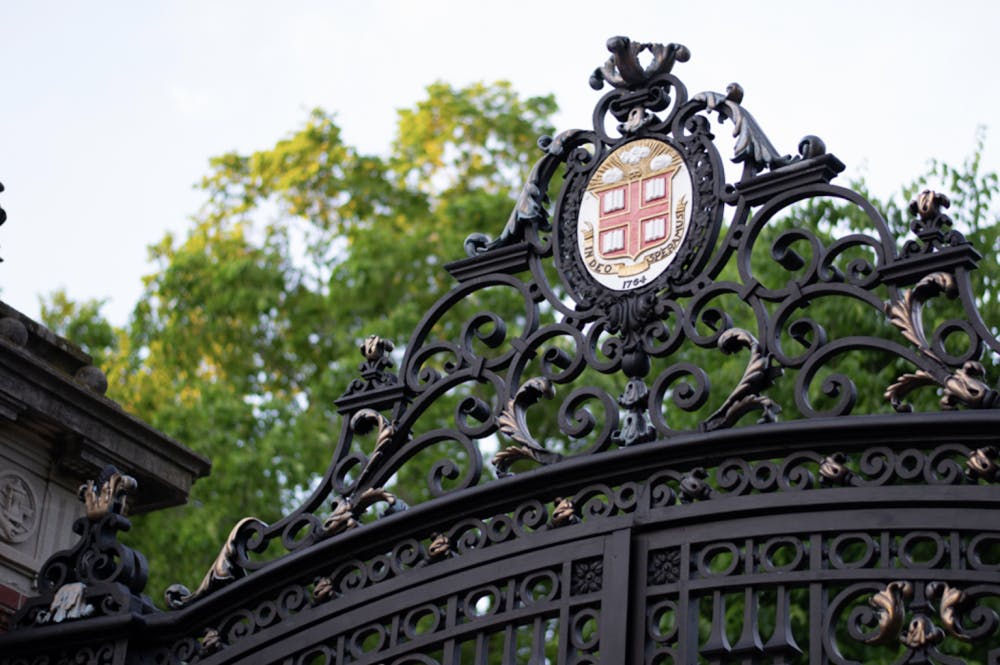Every year, the University typically hosts in-person orientation programs for incoming first-years to learn about academics and extracurriculars as well as meet other students. But this year, due to the COVID-19 pandemic and Quiet Period restrictions, the orientation moved to a virtual format.
New Student Orientation took place between Jan. 13 and 19 and hosted events including the President’s Welcome, Culture of Consent and Community Care, Campus Resource Fair and Speed Friending.
But the shift to virtual orientation necessitated a number of changes to the scope of the programming.
“First-year students were assigned to a small group facilitated by a Bruno Leader,” Sean Thompson, program director for orientation and first-year experience, wrote in an email to The Herald. “They followed specific schedules designed to manage Zoom fatigue for students and monitor impact on university facilities like dining and the mailroom.”
Orientation leaders placed particular emphasis on the Bruno Leader small group meetings, which largely consisted of students’ resident hall neighbors. In addition, nightly optional programming allowed for other small groups and residence halls to interact with each other.
Thompson commended the Bruno Leaders for helping first-years from all over the world transition to college.
“The leaders eagerly jumped into supporting their students, pivoting and being flexible with every students’ schedule and serving our remote students that spanned over 12 time zones,” Thompson wrote. “Some of our Bruno Leaders woke up at 7:00 a.m. to meet with their students, and others stayed up late to facilitate conversations and answering questions.”
Some unexpected silver linings emerged from the transition to virtual programming, such as increasing access to online events, according to Thompson.
“Knowing that there are few locations on campus that can host 1,700+ students, the online options for events like the President’s Welcome & the Culture of Consent & Community Care served our residential and remote students,” Thompson wrote. “We were able to record a lot of the programming that is now housed on the website for reference. It provided secure options for accessibility for all of our students.”
From the perspective of Amienne Spencer-Blume ’23, who served as a Bruno Leader during orientation, the organization and many hours of preparation paid off. The high turnout of the program reflected its success, she said. For example, the talent show attracted 400 participants, a much higher number than expected, Spencer-Blume said.
Dante Cavaz ’24 enjoyed the wide variety of options offered in the orientation program. “I didn’t feel very confined by it,” Cavaz said. “I was glad that they respected our time for the most part and gave us the information that we needed and didn’t hold us for too long.”
Lauren Bonner ’24.5 acknowledged the challenges of virtual orientation but felt that it was ultimately a positive medium through which to meet new peers. “I definitely feel like I’ve been able to meet people and I felt comfortable about reaching out to people I thought were cool and striking up a conversation with them after they were in my orientation group or in some kind of meeting with me,” Bonner said.
But both Cavaz and Bonner agreed that it was difficult to keep track of programming due to occasional communication issues. “There were some hiccups in communication because they were working with so many groups, trying to get information from so many sources,” Cavaz said. “I think that could be unified in the future. But all the negatives seem very much a product of the situation that we are in.”
This feedback mirrored the comments that Spencer-Blume received from her Bruno group, who said that it was difficult to keep an overview of events, and programming could have been more centralized.
Her group also noted in feedback that they wished “more events had been focused on breaking the groups up into smaller groups and making them talk to each other, compared to just playing games,” Spencer-Blume said.
Bonner said she would have liked “more information about dining and registration and those things that are relevant to our day-to-day life. I don’t know what flex points are versus meal credits. I asked my Meiklejohn for help, but I thought it was a confusing process that I would've liked to have been covered more during orientation.”
Overall, Cavaz felt that the program was successful given the circumstances.
“I could tell there was a lot of work put into it and I respected everybody who was trying to make the best out of this bad situation and trying to help us get acclimated,” Cavaz said. “I think some of the events landed better than others but I understand that you just gotta try stuff and hope that some stuff sticks.”
Seoeun Choi is a staff writer in Arts & Culture and University News. She is a junior from Frankfurt, Germany studying comparative literature (English, German, Korean) and history.





